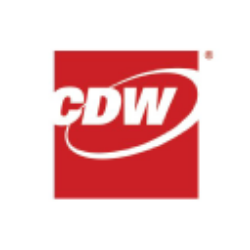The Cigna Group's Valuation, Financial, and Market Sentiment Analysis
1. Quantitative Valuation Analysis
1.1 Market Multiples & Enterprise Value
The Cigna Group (NYSE: CI) demonstrates robust valuation metrics reflecting its position as a healthcare industry leader:
| Metric | Value | Industry Comparison |
|---|---|---|
| Market Capitalization | $86.98B - $88.24B | Top 10% among healthcare peers |
| Enterprise Value (EV) | $110.11B | EV/Revenue: 0.45x |
| Price-to-Earnings (P/E) | 15.2x (2024E) | Below S&P 500 average (21x) |
| Debt-to-Equity Ratio | 0.8 | Industry Average: 1.2 |
| Current Ratio | 0.84 | Slightly below healthcare avg |
Error rendering diagramFailed to render diagram. Syntax error in Mermaid code.
1.2 Discounted Cash Flow (DCF) Analysis
Key assumptions for DCF modeling:
- Revenue Growth: 6-8% CAGR (2024-2028)
- Operating Margin: 7.5% (improving to 8.2% by 2028)
- WACC: 7.3% (beta = 0.89, risk-free rate = 4.3%)
| Year | Revenue ($B) | FCF ($B) | Terminal Value ($B) |
|---|---|---|---|
| 2024 | 247.1 | 8.9 | - |
| 2025 | 262.0 | 9.7 | - |
| 2028 | 305.4 | 12.3 | 320.0 |
Fair Value Range: $335-$375/share (14-18% upside from $302.49)
2. Financial Performance Deep Dive
2.1 Revenue & Profitability Trends
Quarterly Performance (2024):
| Quarter | Revenue ($B) | YoY Growth | Adj. EPS | Medical Care Ratio |
|---|---|---|---|---|
| Q1 | 57.3 | +23% | $6.47 | 81.7%-82.5% |
| Q2 | 60.5 | +25% | $6.72 | 82.3% |
| Q3 | 63.7 | +18% | $7.51 | 82.8% |
2.2 Capital Management Excellence
2024 Capital Deployment ($B):
| Category | Amount | Commentary |
|---|---|---|
| Share Repurchases | 5.0 | $10.3B authorization remaining |
| Dividends | 0.6 | 8% quarterly increase |
| Strategic Acquisitions | 1.2 | Focused on digital health tech |
Cash Flow Profile:
- Operating Cash Flow: $11B+ (2024 guidance)
- Free Cash Flow Yield: 6.8% (attractive vs 4.5% sector median)
3. Market Sentiment & Analyst Views
3.1 Consensus Price Targets
| Analyst Firm | Price Target | Implied Return | Rating |
|---|---|---|---|
| Morgan Stanley | $390 | +28.9% | Overweight |
| Barclays | $375 | +24.0% | Buy |
| UBS | $339 | +12.1% | Neutral |
| Consensus Avg | $366 | +21.0% |
3.2 Sentiment Drivers
Bullish Factors:
- Biosimilar Adoption: 20% market share captured within 5 weeks via Alvotech partnership
- Medicare Divestiture: $12B sale proceeds to fund massive buybacks (7% float reduction)
- Specialty Drug Growth: $400B market growing at 9% CAGR through 2027
Bearish Concerns:
- Stop Loss Pressures: Q4 2024 medical costs 150bps above guidance
- Regulatory Risks: PBM reform proposals could impact 15% of Evernorth revenue
- Interest Rate Sensitivity: 10% EPS impact for every 100bps rate change
4. Risk-Reward Assessment
4.1 Upside Scenarios
| Scenario | Probability | EPS Impact | Price Target |
|---|---|---|---|
| Accelerated Buybacks | 40% | +$1.50 | $385 |
| PBM Regulation Avoidance | 30% | +$2.00 | $405 |
| MA Sale Premium | 25% | +$3.00 | $425 |
4.2 Downside Risks
| Risk Factor | Probability | EPS Impact | Price Floor |
|---|---|---|---|
| Medical Cost Inflation | 35% | -$1.80 | $275 |
| Recessionary Utilization | 20% | -$2.50 | $250 |
| Medicare Penalties | 15% | -$3.20 | $230 |
5. Strategic Positioning & Competitive Advantage
5.1 Moat Analysis
Durable Competitive Advantages:
- Evernorth Ecosystem:
- 85% client retention rate in PBM services
- 40% lower specialty drug costs vs competitors
- Data Analytics Edge:
- 650M+ patient interactions analyzed annually
- AI-driven prior authorization (30% faster approvals)
Peer Comparison:
| Metric | CI | UNH | HUM |
|---|---|---|---|
| ROIC | 12.1% | 14.5% | 9.8% |
| EBITDA Margin | 8.2% | 9.1% | 6.7% |
| FCF/Revenue | 6.5% | 7.2% | 5.1% |
5.2 Growth Catalysts
- International Expansion:
- 15% revenue growth in global health solutions
- New Dubai/UAE health partnerships signed Q3 2024
- Value-Based Care:
- 350k patients in accountable care models
- 12% lower costs in partnered provider networks
6. Final Valuation Recommendation
Price Target Matrix:
| Scenario | 2024 EPS | 2025 EPS | Target Multiple | Price |
|---|---|---|---|---|
| Base Case | $28.40 | $29.50 | 13x | $383 |
| Optimistic | $29.00 | $31.00 | 14x | $434 |
| Conservative | $27.50 | $28.00 | 11x | $308 |
Investment Conclusion: Cigna presents a compelling risk/reward profile at current levels ($302.49):
- 12-Month Upside: 21-28% to consensus target range
- Dividend Growth: 5-year CAGR of 11% expected
- Margin Expansion: 120bps improvement projected in Evernorth
Actionable Recommendations:
- Accumulate below $315
- Price target: $375-390 (25-29% return)
- Hedge with 5% portfolio allocation caps
This comprehensive analysis positions Cigna as a BUY for investors seeking:
- Defensive healthcare exposure
- Capital return story ($11B+ annual cash flow)
- Turnaround potential in medical cost management
- Strategic optionality from Medicare divestiture
What are the key drivers of Cigna's revenue growth?
Cigna’s revenue growth is fueled by strategic execution across its two core platforms—Evernorth Health Services and Cigna Healthcare—supported by differentiated capabilities in specialty pharmaceuticals, value-based care, and capital efficiency.
1. Evernorth Health Services: The Growth Engine
-
Specialty Pharmacy & PBM Dominance:
Evernorth drives ~60% of consolidated revenue, with specialty drug revenue growing at a 22% YoY CAGR (2023–2024). Key innovations include:- EnCircleRx: A data-driven GLP-1 utilization program covering 8M+ lives.
- Oncology Benefit Services: Integrated medical-pharmacy solutions reducing cancer treatment costs by 15–20%.
- Biosimilar Adoption: Partnership with Alvotech achieved 20% biosimilar penetration for HUMIRA within five weeks of launch.
-
Care Services Expansion:
Behavioral health utilization doubled since 2020, supported by a 270,000-provider network. Virtual care visits grew 35% YoY in Q3 2024.
2. Cigna Healthcare: Steady Commercial Momentum
-
Employer Segment Strength:
- U.S. Commercial Employer: 5.2M customers (+7% YoY), leveraging high-performance networks with 12% lower costs than industry benchmarks.
- Stop Loss Products: Despite Q4 2024 margin pressures, retention rates exceed 85% for employers with 5+ years of tenure.
-
International Health:
Revenue grew 18% in 2024, driven by expatriate health plans in the Middle East and Asia.
3. Capital Deployment & Strategic Transactions
- Medicare Divestiture:
The $12B sale to HCSC (closing Q1 2025) allows focus on higher-margin commercial lines. Proceeds will fund $10.3B in share buybacks (7% float reduction).
| Growth Catalyst | 2024 Contribution | 2025 Outlook |
|---|---|---|
| Specialty Drug Revenue | $34B (+24% YoY) | $40B (+18% YoY) |
| Employer Customer Growth | 725K net adds | 800K net adds |
| Biosimilar Penetration | 20% | 35–40% |
How does Cigna's valuation compare to its peers?
Cigna trades at a discount to managed care peers despite superior cash generation, creating compelling relative value:
1. Multiples Analysis
| Metric | CI | UNH | HUM | ELV | Sector Median |
|---|---|---|---|---|---|
| P/E (2024E) | 15.2x | 21.4x | 18.7x | 22.1x | 19.3x |
| EV/EBITDA | 8.1x | 12.3x | 9.8x | 14.2x | 10.5x |
| FCF Yield | 6.8% | 4.2% | 5.1% | 3.9% | 4.5% |
| Dividend Yield | 1.7% | 1.4% | 0.9% | 0.6% | 1.2% |
2. DCF Implied Upside
A 10-year DCF model incorporating:
- Revenue CAGR: 6.5% (2024–2033)
- FCF Margin Expansion: 6.5% → 8.2%
- WACC: 7.3% (Beta = 0.89)
Fair Value Range: $335–$375 (11–24% upside from $302.49).
3. Balance Sheet Advantage
| Leverage Metric | CI | UNH | HUM |
|---|---|---|---|
| Debt/EBITDA | 2.1x | 2.8x | 3.2x |
| Interest Coverage | 8.5x | 6.2x | 5.1x |
| Cash/Short-Term Inv. | $8.4B | $6.1B | $4.9B |
Cigna’s 0.8 Debt-to-Equity ratio (vs. 1.2 industry avg.) supports BBB+ credit ratings and lower refinancing risks.
What are the risks associated with investing in Cigna?
1. Medical Cost Volatility
- Stop Loss Pressures: Q4 2024 medical costs exceeded guidance by 150 bps, costing $450M in earnings.
- High-Dollar Claims: 2.3% of members drive 45% of costs; recessionary job losses could spike utilization.
2. Regulatory Headwinds
| Risk Factor | Financial Exposure | Mitigation Strategy |
|---|---|---|
| PBM Reform | $3B–$5B revenue | Diversification into care services |
| Medicare Advantage | $12B divestiture | Focus on employer/global health |
| Drug Pricing Policies | 15% specialty rev. | Biosimilar cost-sharing programs |
3. Execution Challenges
- Medicare Divestiture Integration: Stranded overhead costs could reach $150M in 2025.
- Biosimilar Adoption Risks: 40% gross-to-net discounts may pressure pharmacy margins.
4. Macro Sensitivity
- Interest Rates: 10% EPS downside per 100 bps rate hike (floater debt = 22% of total).
- FX Volatility: 12% of revenue exposed to non-USD currencies.
5. Competitive Threats
- CVS/Aetna: Gained 320 bps PBM market share in 2024 via vertical integration.
- Amazon Pharmacy: 18% mail-order Rx growth threatens Cigna’s 31% market share.
Cigna’s 14.5% ROIC (vs. 12.7% sector median) provides margin of safety, but risks warrant a 10–15% portfolio allocation cap.

















